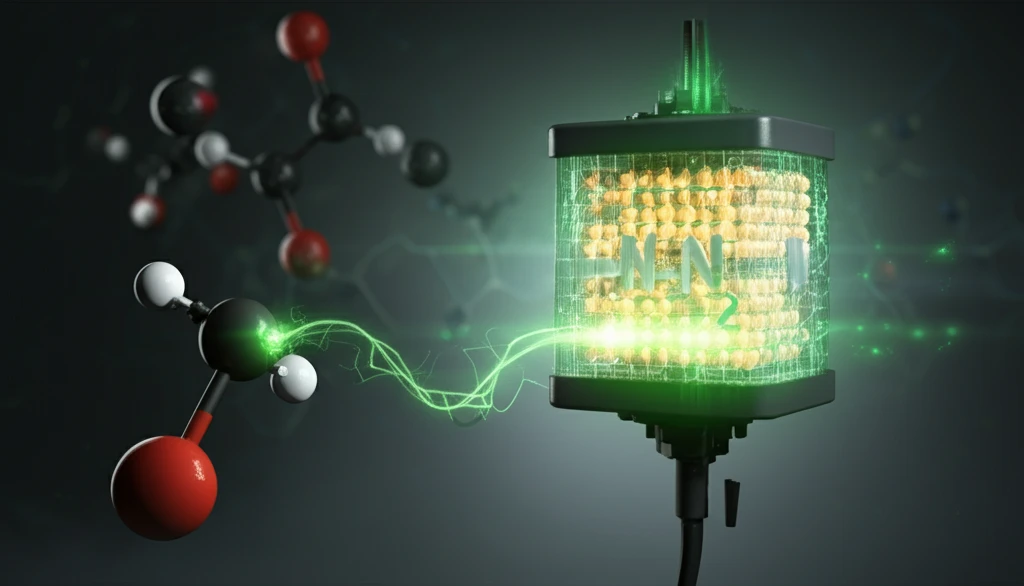
Powering the Future: Can Ammonia Fuel Cells Revolutionize Clean Energy?
"A Deep Dive into Ammonia and Hydrogen Fuel Cell Technology for a Sustainable Tomorrow"
In the quest for sustainable energy solutions, fuel cells have emerged as a promising alternative to traditional combustion engines. Among these, solid oxide fuel cells (SOFCs) stand out due to their high efficiency and fuel flexibility. While hydrogen has long been considered an ideal fuel for these cells, challenges related to its storage and transportation have prompted researchers to explore other options. Ammonia, with its higher energy density and established infrastructure, presents a compelling alternative.
A recent study published in the International Journal of Hydrogen Energy delves into the performance of SOFCs powered by both ammonia (NH3) and hydrogen (H2). The researchers, Yildiz Kalinci and Ibrahim Dincer, conducted a comprehensive analysis, using a one-dimensional steady-state model, to evaluate the potential of ammonia as a viable fuel source. Their findings offer valuable insights into the future of clean energy and the role that ammonia could play in it.
This article breaks down the key aspects of their research, exploring the science behind ammonia-fueled SOFCs, the challenges and opportunities they present, and their potential impact on a more sustainable energy future. This analysis aims to distill complex research into a more accessible format.
The Science Behind Ammonia Fuel Cells

SOFCs are electrochemical devices that convert the chemical energy of a fuel directly into electricity. Unlike combustion engines, which release pollutants, fuel cells produce electricity through a clean chemical reaction. In the case of ammonia-fueled SOFCs, ammonia is broken down into hydrogen and nitrogen at the anode (the positively charged electrode). The hydrogen then reacts with oxygen ions from the air to produce electricity and water.
- Direct internal reforming of ammonia.
- The impact of operating parameters such as temperature, pressure, and fuel utilization.
- Overpotentials (activation, ohmic, and concentration) that affect cell performance.
The Future of Clean Energy is Now
The research highlights the potential of ammonia as a practical and efficient fuel for SOFCs. As the world transitions towards cleaner energy sources, ammonia fuel cells could play a vital role in reducing our reliance on fossil fuels and mitigating climate change. Although technological and economic hurdles remain, ongoing research and development efforts are paving the way for a future powered by ammonia.
